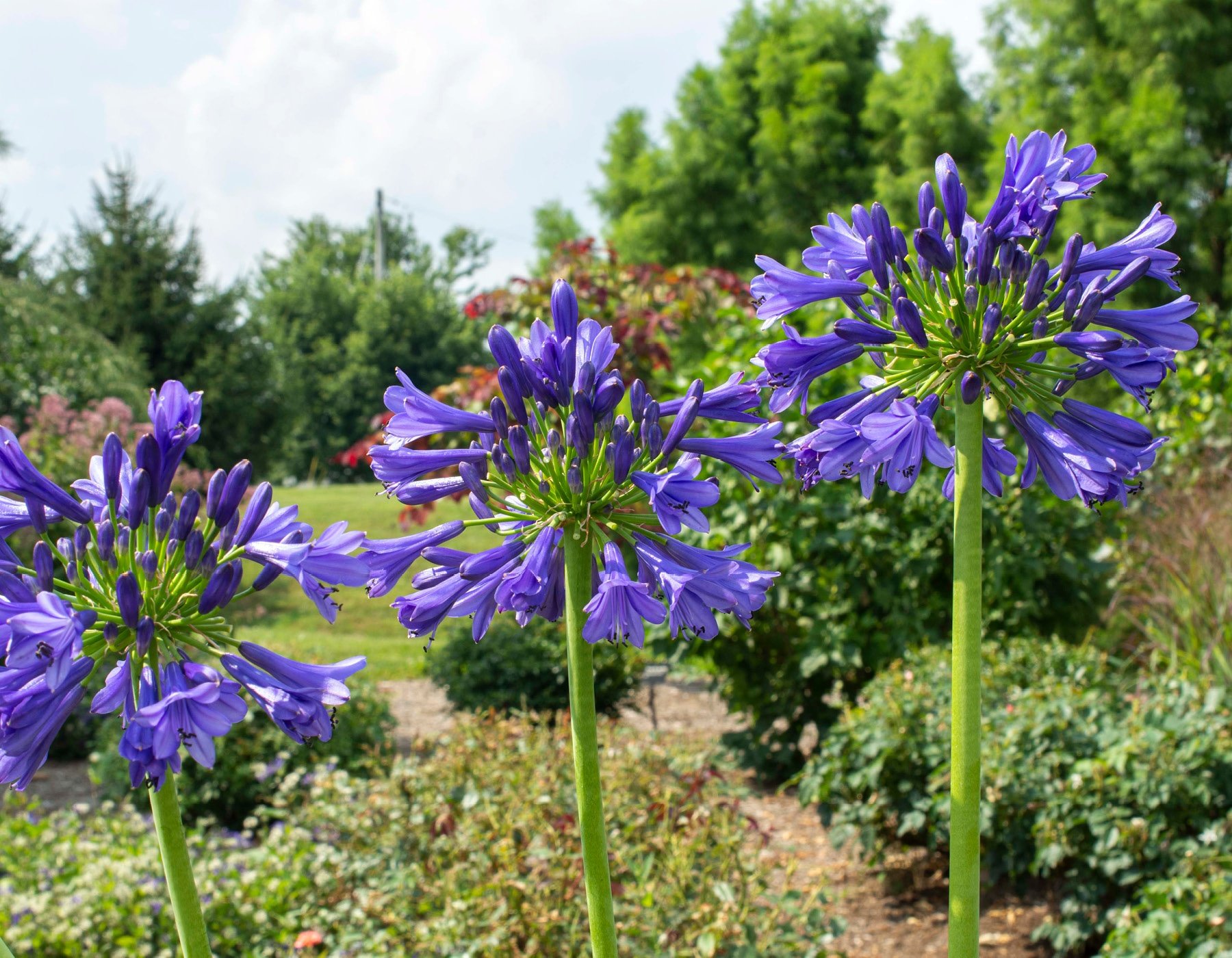Releasing the Secret to Successful Agapanthus Cultivation: Tips and Tricks for a Flourishing Yard
In the world of horticulture, growing agapanthus efficiently needs a calculated technique that encompasses numerous facets of plant treatment. By comprehending the subtleties of agapanthus growing, one can create an atmosphere where these plants thrive and bloom perfectly.
Growing Agapanthus: Finest Practices
When planting Agapanthus, appropriate soil prep work is important for making sure successful growth and development of these beautiful blossoms. Agapanthus, typically called Lily of the Nile or African lily, flourishes in well-draining soil with a somewhat acidic to neutral pH degree - Agapanthus. Prior to growing, it is vital to amend hefty clay soils with raw material such as garden compost or peat moss to improve water drainage and offer essential nutrients for the plants
To grow Agapanthus, choose a place that obtains full sunshine to partial color, as this will promote healthy and balanced development and bountiful flowering. Dig an opening twice the size of the plant's root sphere and place the Agapanthus at the exact same depth it was previously expanding. Delicately backfill the hole with soil, pushing down securely to eliminate any type of air pockets around the roots.
Water the recently planted Agapanthus completely and remain to maintain the dirt equally moist, specifically during the plant's active expanding period. Agapanthus. Applying a balanced plant food once a month can even more sustain the plant's development and blooming. By adhering to these finest methods for planting Agapanthus, you can develop a stunning screen of these exciting flowers in your garden
Suitable Dirt Conditions for Agapanthus
For optimum growth and blooming success of Agapanthus plants, making certain the soil conditions are perfect is essential. Agapanthus prefers soil that is rich in nutrients, so including a balanced fertilizer throughout the expanding season can promote healthy and balanced development and lively blooms.

Watering and Feeding Tips
To make sure healthy and balanced growth and vibrant blooms, proper watering and fertilizing techniques are essential for successful Agapanthus cultivation. Agapanthus plants benefit from regular watering, especially throughout the expanding period.
When it involves feeding Agapanthus, a balanced plant food with equal parts nitrogen, phosphorus, and potassium can be applied in the spring to promote healthy and balanced development and blooming. Slow-release plant foods are suitable for giving nutrients progressively over an extensive period. Stay clear of over-fertilizing, as this can result in excessive vegetation development at the expense of blooms.
Furthermore, incorporating natural issue like garden compost into the dirt can enhance nutrient degrees and enhance soil framework, aiding in the total health and wellness of the Agapanthus plants. By following these watering and feeding ideas, gardeners can guarantee their Agapanthus plants grow and create a fantastic read spectacular displays of blossoms.
Trimming and Deadheading Methods
Proper pruning and deadheading methods play a vital role in keeping the health and wellness and appearances of Agapanthus plants, matching the essential methods of watering and fertilizing index for effective cultivation. Trimming Agapanthus involves eliminating invested flower heads, dead or yellowing fallen leaves, and general shaping of the plant to advertise much better development. Deadheading, the procedure of getting rid of faded blossoms, not just enhances the plant's appearance yet likewise encourages more blooming.
When deadheading Agapanthus, it is a good idea to snip off the blossom stem at the base making use of sharp, clean shears. This process reroutes the plant's energy from seed manufacturing back right into root and vegetation growth, advertising a healthier and a lot more robust plant. Routine deadheading can prolong the growing period of Agapanthus and stop self-seeding, which can cause congestion.
In terms of trimming, Agapanthus generally gain from a light trim after blooming to clean up the plant and encourage fresh growth. Cutting back the invested blossom stems and removing any type of dead or broken vegetation helps preserve the plant's vitality and general appearance. However, it is vital to prevent reducing into the crown of the plant, as this can weaken its health.

Protecting Agapanthus From Vermins and Diseases
Implementing efficient pest and illness management approaches is important to protecting the wellness and vitality of Agapanthus plants in farming. One common insect that influences Agapanthus is the Agapanthus borer, a caterpillar that tunnels right into the plant, creating damage to the blossoms and leaves.
In enhancement to parasites, Agapanthus are susceptible to illness such as origin rot and fungal fallen leave spots. By staying vigilant and attending to parasite and disease concerns promptly, gardeners can help their Agapanthus flourish and prosper.

Verdict
To conclude, successful farming of agapanthus needs correct planting strategies, perfect dirt conditions, sufficient watering and feeding, regular trimming and deadheading, and security from diseases and insects. By following these tips and tricks, garden enthusiasts can make sure a prospering yard full of attractive agapanthus blossoms. Agapanthus. Keep in mind to preserve constant care and attention to detail to promote the health and wellness and durability of these magnificent plants
When planting see this website Agapanthus, proper soil preparation is crucial for ensuring effective development and growth of these lovely blossoms.Water the freshly grown Agapanthus extensively and proceed to maintain the dirt equally moist, particularly throughout the plant's energetic expanding season.For ideal growth and blooming success of Agapanthus plants, ensuring the dirt problems are excellent is crucial. When transplanting or growing Agapanthus, guarantee the soil is well-prepared to supply the needed foundation for the plants to establish themselves effectively. One common pest that affects Agapanthus is the Agapanthus borer, a caterpillar that tunnels into the plant, creating damages to the flowers and fallen leaves.
Comments on “Growing Agapanthus: A Complete Guide to Beautiful Blooms”